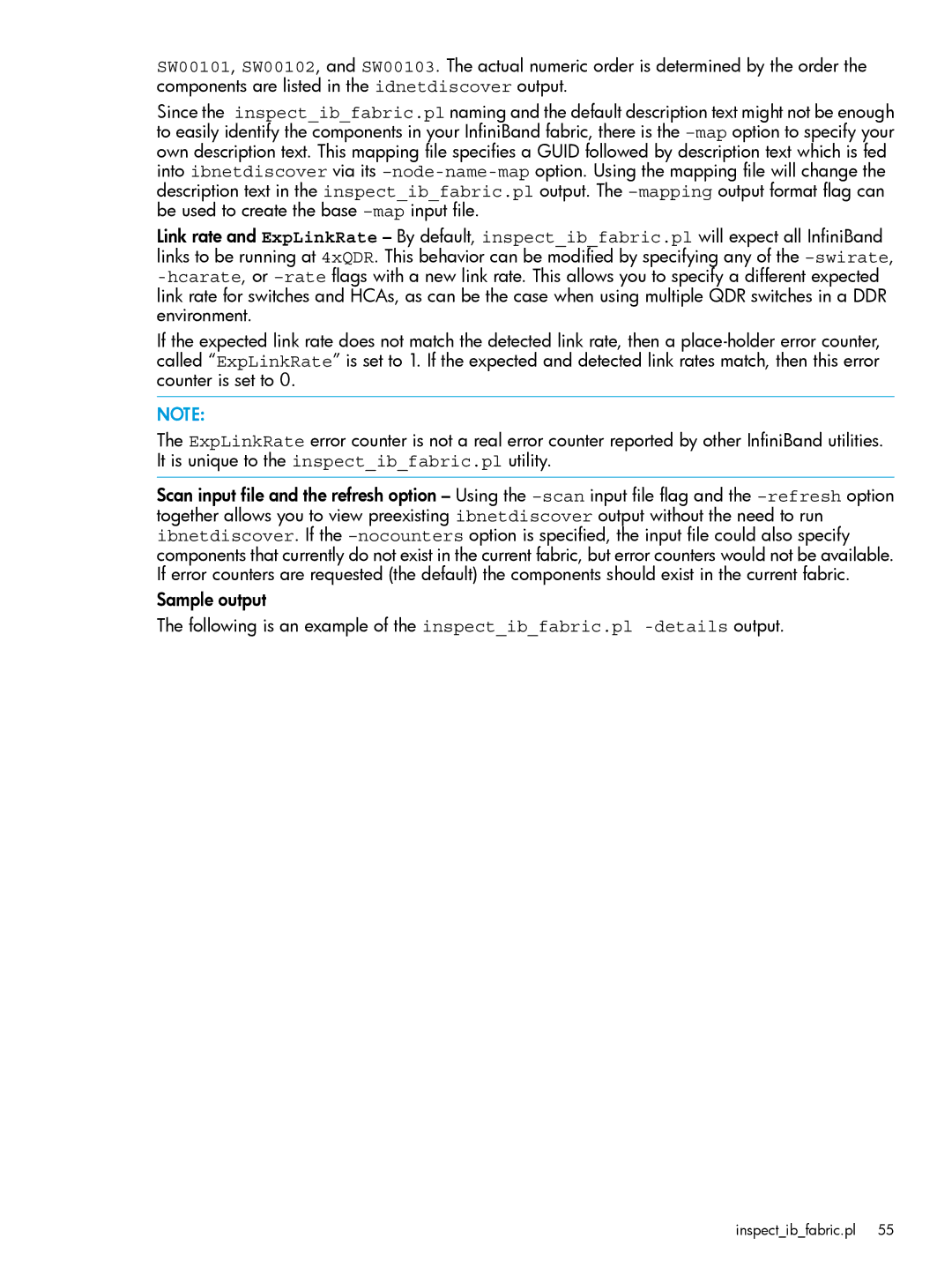SW00101, SW00102, and SW00103. The actual numeric order is determined by the order the components are listed in the idnetdiscover output.
Since the inspect_ib_fabric.pl naming and the default description text might not be enough to easily identify the components in your InfiniBand fabric, there is the –mapoption to specify your own description text. This mapping file specifies a GUID followed by description text which is fed into ibnetdiscover via its –node-name-mapoption. Using the mapping file will change the description text in the inspect_ib_fabric.pl output. The –mappingoutput format flag can be used to create the base –mapinput file.
Link rate and ExpLinkRate – By default, inspect_ib_fabric.pl will expect all InfiniBand links to be running at 4xQDR. This behavior can be modified by specifying any of the –swirate, -hcarate, or –rateflags with a new link rate. This allows you to specify a different expected link rate for switches and HCAs, as can be the case when using multiple QDR switches in a DDR environment.
If the expected link rate does not match the detected link rate, then a place-holder error counter, called “ExpLinkRate” is set to 1. If the expected and detected link rates match, then this error counter is set to 0.
NOTE:
The ExpLinkRate error counter is not a real error counter reported by other InfiniBand utilities. It is unique to the inspect_ib_fabric.pl utility.
Scan input file and the refresh option – Using the –scaninput file flag and the –refreshoption together allows you to view preexisting ibnetdiscover output without the need to run ibnetdiscover. If the –nocountersoption is specified, the input file could also specify components that currently do not exist in the current fabric, but error counters would not be available. If error counters are requested (the default) the components should exist in the current fabric.
Sample output
The following is an example of the inspect_ib_fabric.pl -detailsoutput.

